Subspace Clustering Via Joint Unsupervised Feature Selection
Wenhua Dong,
Xiaojun Wu,
Hui Li,
Zhenhua Feng,
Josef Kittler

Auto-TLDR; Unsupervised Feature Selection for Subspace Clustering
Similar papers
Fast Subspace Clustering Based on the Kronecker Product
Lei Zhou, Xiao Bai, Liang Zhang, Jun Zhou, Edwin Hancock

Auto-TLDR; Subspace Clustering with Kronecker Product for Large Scale Datasets
Abstract Slides Poster Similar
A Spectral Clustering on Grassmann Manifold Via Double Low Rank Constraint
Xinglin Piao, Yongli Hu, Junbin Gao, Yanfeng Sun, Xin Yang, Baocai Yin
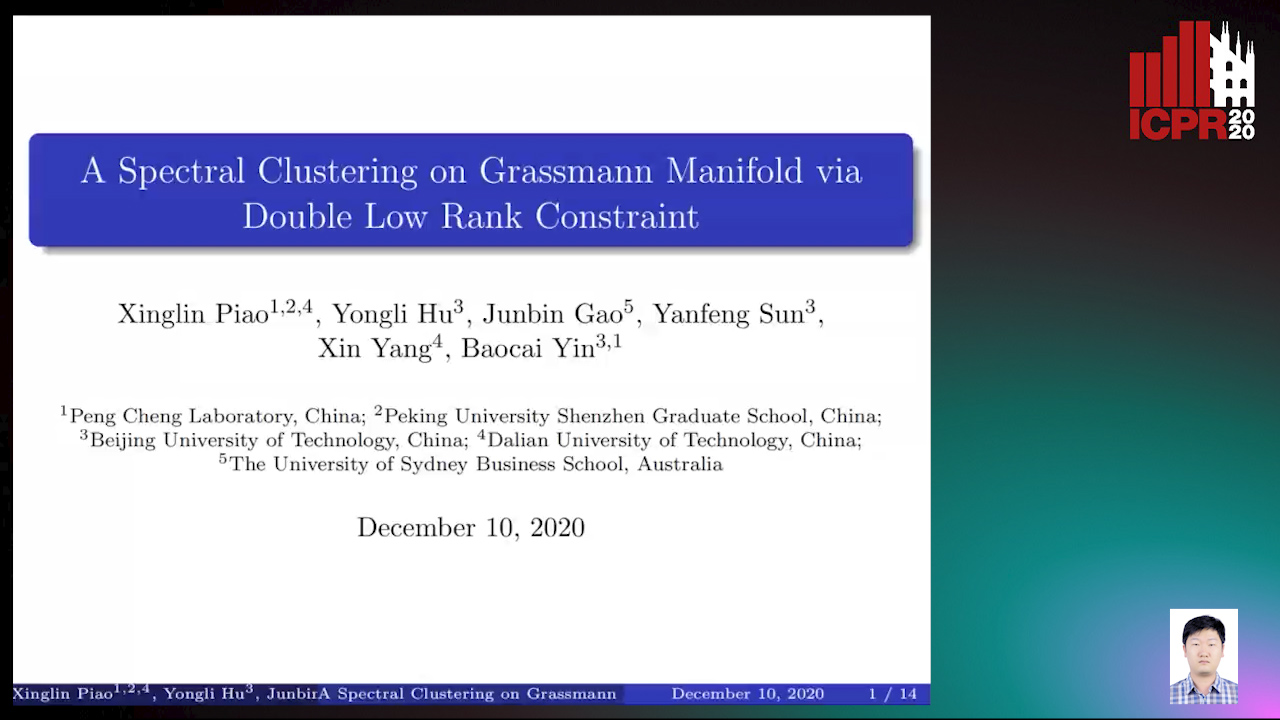
Auto-TLDR; Double Low Rank Representation for High-Dimensional Data Clustering on Grassmann Manifold
Sparse-Dense Subspace Clustering
Shuai Yang, Wenqi Zhu, Yuesheng Zhu
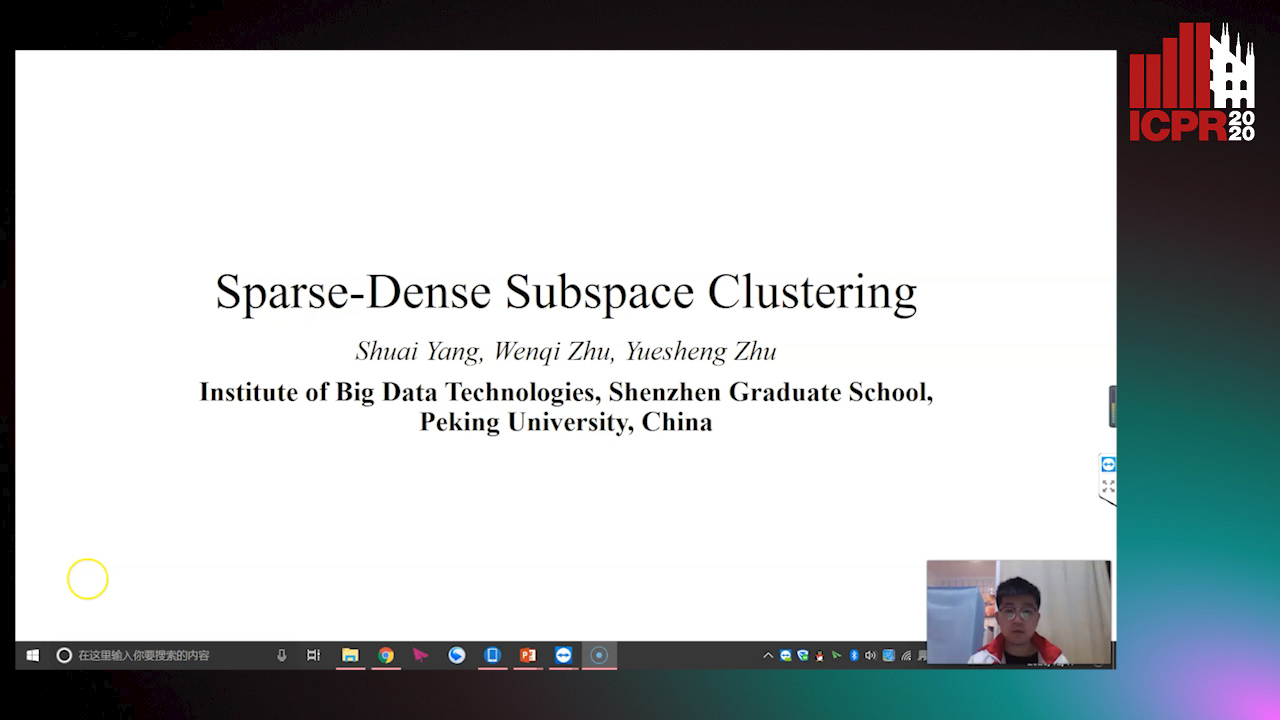
Auto-TLDR; Sparse-Dense Subspace Clustering with Piecewise Correlation Estimation
Abstract Slides Poster Similar
Low Rank Representation on Product Grassmann Manifolds for Multi-viewSubspace Clustering
Jipeng Guo, Yanfeng Sun, Junbin Gao, Yongli Hu, Baocai Yin

Auto-TLDR; Low Rank Representation on Product Grassmann Manifold for Multi-View Data Clustering
Abstract Slides Poster Similar
Double Manifolds Regularized Non-Negative Matrix Factorization for Data Representation
Jipeng Guo, Shuai Yin, Yanfeng Sun, Yongli Hu
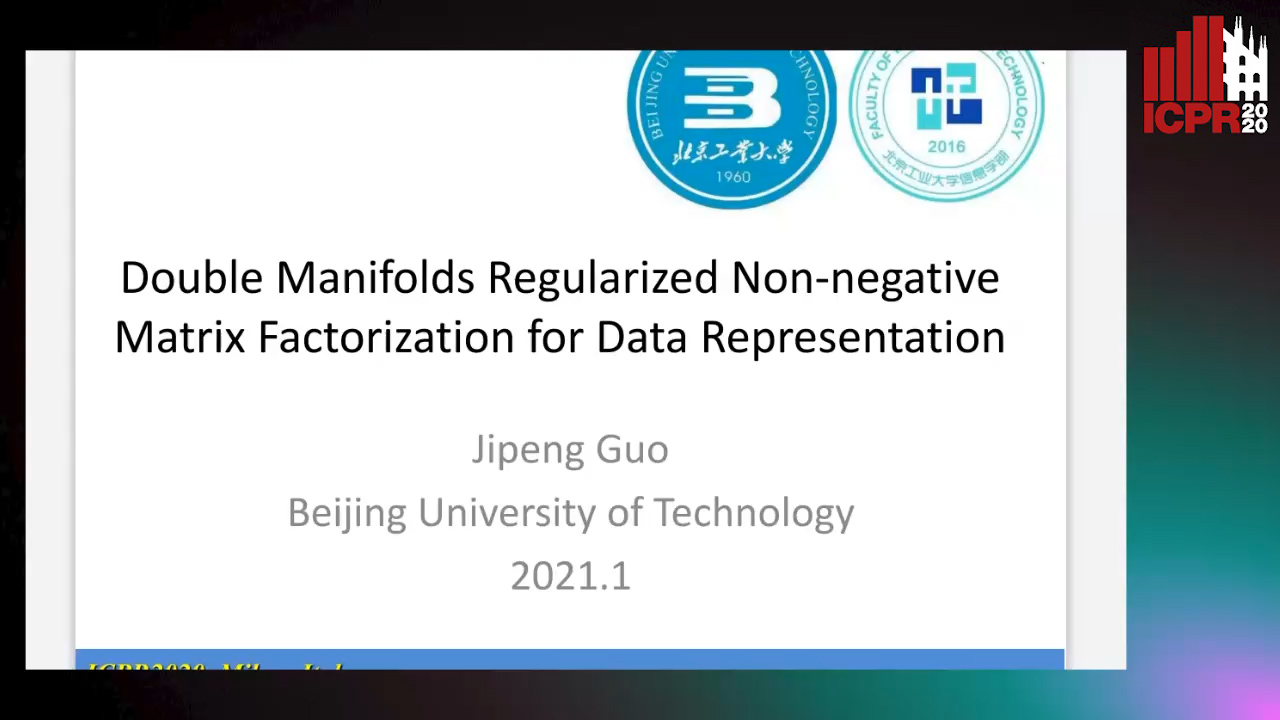
Auto-TLDR; Double Manifolds Regularized Non-negative Matrix Factorization for Clustering
Abstract Slides Poster Similar
Scalable Direction-Search-Based Approach to Subspace Clustering

Auto-TLDR; Fast Direction-Search-Based Subspace Clustering
Subspace Clustering for Action Recognition with Covariance Representations and Temporal Pruning
Giancarlo Paoletti, Jacopo Cavazza, Cigdem Beyan, Alessio Del Bue

Auto-TLDR; Unsupervised Learning for Human Action Recognition from Skeletal Data
Embedding Shared Low-Rank and Feature Correlation for Multi-View Data Analysis
Zhan Wang, Lizhi Wang, Hua Huang

Auto-TLDR; embedding shared low-rank and feature correlation for multi-view data analysis
Abstract Slides Poster Similar
Feature Extraction by Joint Robust Discriminant Analysis and Inter-Class Sparsity

Auto-TLDR; Robust Discriminant Analysis with Feature Selection and Inter-class Sparsity (RDA_FSIS)
Soft Label and Discriminant Embedding Estimation for Semi-Supervised Classification
Fadi Dornaika, Abdullah Baradaaji, Youssof El Traboulsi

Auto-TLDR; Semi-supervised Semi-Supervised Learning for Linear Feature Extraction and Label Propagation
Abstract Slides Poster Similar
Label Self-Adaption Hashing for Image Retrieval
Jianglin Lu, Zhihui Lai, Hailing Wang, Jie Zhou

Auto-TLDR; Label Self-Adaption Hashing for Large-Scale Image Retrieval
Abstract Slides Poster Similar
T-SVD Based Non-Convex Tensor Completion and Robust Principal Component Analysis
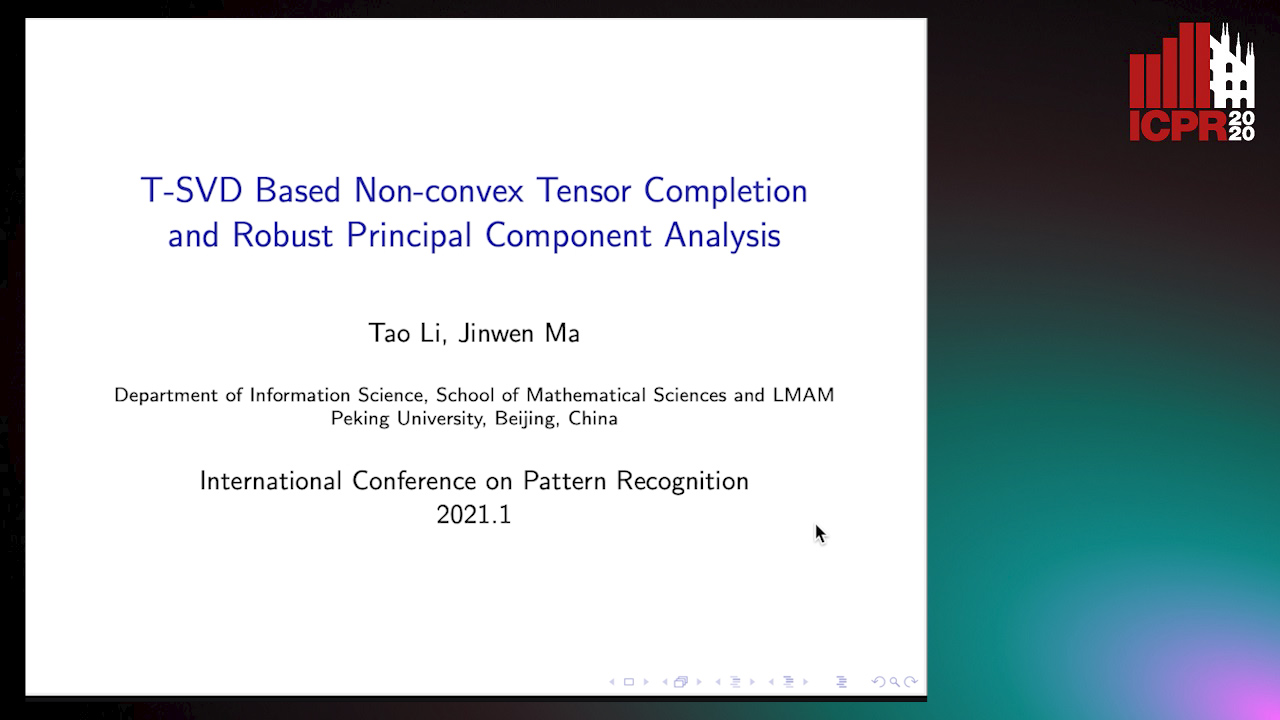
Auto-TLDR; Non-Convex tensor rank surrogate function and non-convex sparsity measure for tensor recovery
Abstract Slides Poster Similar
Classification and Feature Selection Using a Primal-Dual Method and Projections on Structured Constraints
Michel Barlaud, Antonin Chambolle, Jean_Baptiste Caillau

Auto-TLDR; A Constrained Primal-dual Method for Structured Feature Selection on High Dimensional Data
Abstract Slides Poster Similar
Feature Extraction and Selection Via Robust Discriminant Analysis and Class Sparsity

Auto-TLDR; Hybrid Linear Discriminant Embedding for supervised multi-class classification
Abstract Slides Poster Similar
Constrained Spectral Clustering Network with Self-Training
Xinyue Liu, Shichong Yang, Linlin Zong

Auto-TLDR; Constrained Spectral Clustering Network: A Constrained Deep spectral clustering network
Abstract Slides Poster Similar
Motion Segmentation with Pairwise Matches and Unknown Number of Motions
Federica Arrigoni, Tomas Pajdla, Luca Magri

Auto-TLDR; Motion Segmentation using Multi-Modelfitting andpermutation synchronization
Abstract Slides Poster Similar
Ultrasound Image Restoration Using Weighted Nuclear Norm Minimization
Hanmei Yang, Ye Luo, Jianwei Lu, Jian Lu

Auto-TLDR; A Nonconvex Low-Rank Matrix Approximation Model for Ultrasound Images Restoration
Joint Learning Multiple Curvature Descriptor for 3D Palmprint Recognition
Lunke Fei, Bob Zhang, Jie Wen, Chunwei Tian, Peng Liu, Shuping Zhao

Auto-TLDR; Joint Feature Learning for 3D palmprint recognition using curvature data vectors
Abstract Slides Poster Similar
Wasserstein k-Means with Sparse Simplex Projection
Takumi Fukunaga, Hiroyuki Kasai
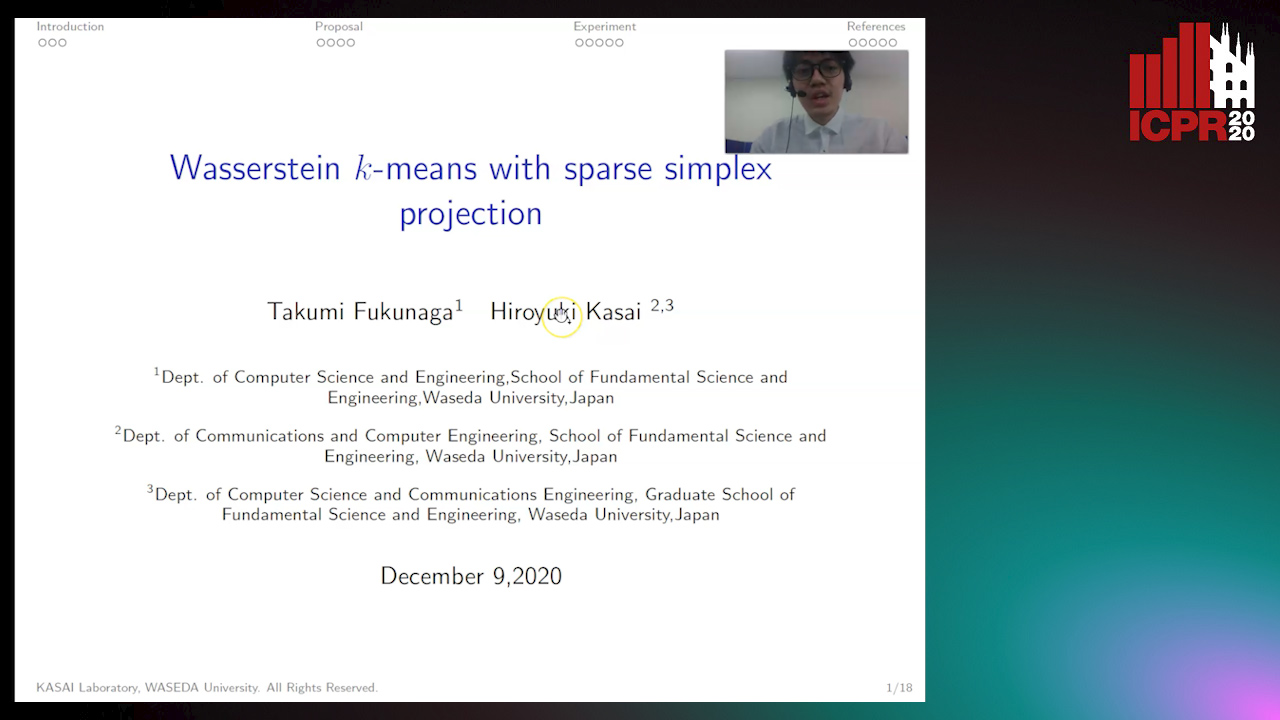
Auto-TLDR; SSPW $k$-means: Sparse Simplex Projection-based Wasserstein $ k$-Means Algorithm
Abstract Slides Poster Similar
Sketch-Based Community Detection Via Representative Node Sampling
Mahlagha Sedghi, Andre Beckus, George Atia

Auto-TLDR; Sketch-based Clustering of Community Detection Using a Small Sketch
Abstract Slides Poster Similar
Discrete Semantic Matrix Factorization Hashing for Cross-Modal Retrieval
Jianyang Qin, Lunke Fei, Shaohua Teng, Wei Zhang, Genping Zhao, Haoliang Yuan

Auto-TLDR; Discrete Semantic Matrix Factorization Hashing for Cross-Modal Retrieval
Abstract Slides Poster Similar
Unveiling Groups of Related Tasks in Multi-Task Learning
Jordan Frecon, Saverio Salzo, Massimiliano Pontil

Auto-TLDR; Continuous Bilevel Optimization for Multi-Task Learning
Abstract Slides Poster Similar
Graph Spectral Feature Learning for Mixed Data of Categorical and Numerical Type
Saswata Sahoo, Souradip Chakraborty
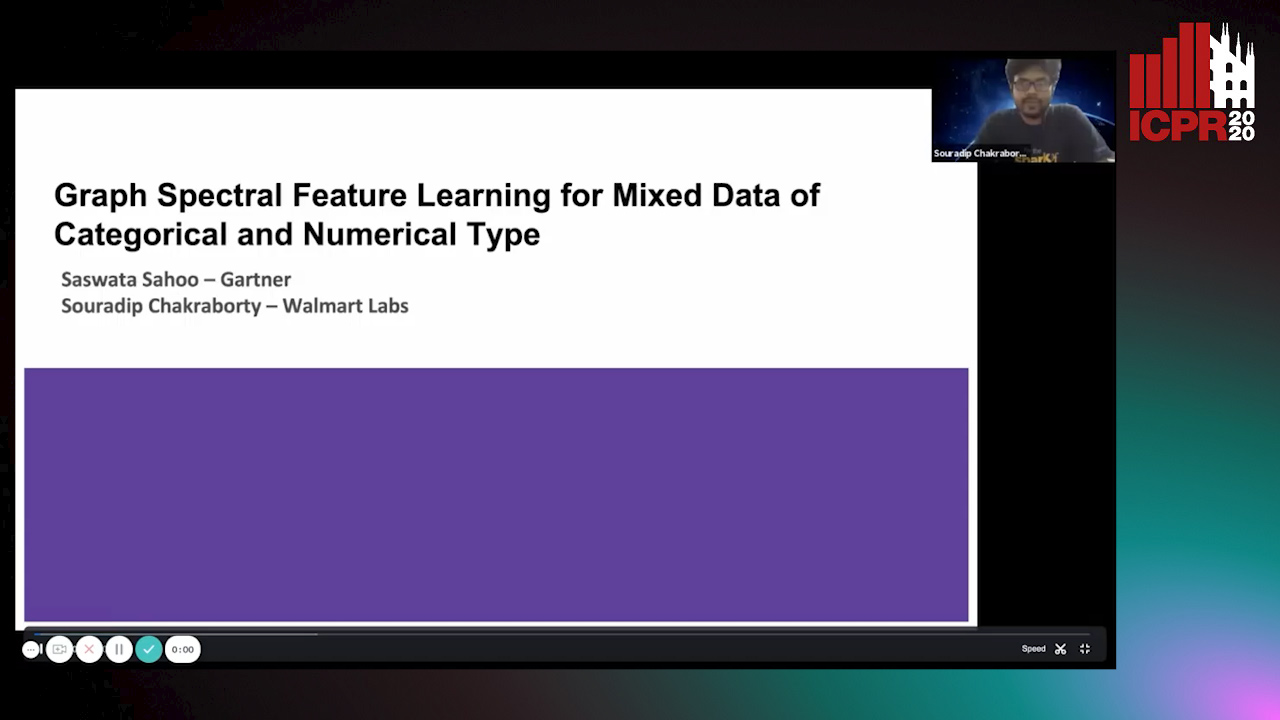
Auto-TLDR; Feature Learning in Mixed Type of Variable by an undirected graph
Abstract Slides Poster Similar
Deep Superpixel Cut for Unsupervised Image Segmentation

Auto-TLDR; Deep Superpixel Cut for Deep Unsupervised Image Segmentation
Abstract Slides Poster Similar
Feature-Aware Unsupervised Learning with Joint Variational Attention and Automatic Clustering
Wang Ru, Lin Li, Peipei Wang, Liu Peiyu

Auto-TLDR; Deep Variational Attention Encoder-Decoder for Clustering
Abstract Slides Poster Similar
Variational Deep Embedding Clustering by Augmented Mutual Information Maximization
Qiang Ji, Yanfeng Sun, Yongli Hu, Baocai Yin

Auto-TLDR; Clustering by Augmented Mutual Information maximization for Deep Embedding
Abstract Slides Poster Similar
Deep Convolutional Embedding for Digitized Painting Clustering
Giovanna Castellano, Gennaro Vessio

Auto-TLDR; A Deep Convolutional Embedding Model for Clustering Artworks
Abstract Slides Poster Similar
A Multi-Task Multi-View Based Multi-Objective Clustering Algorithm
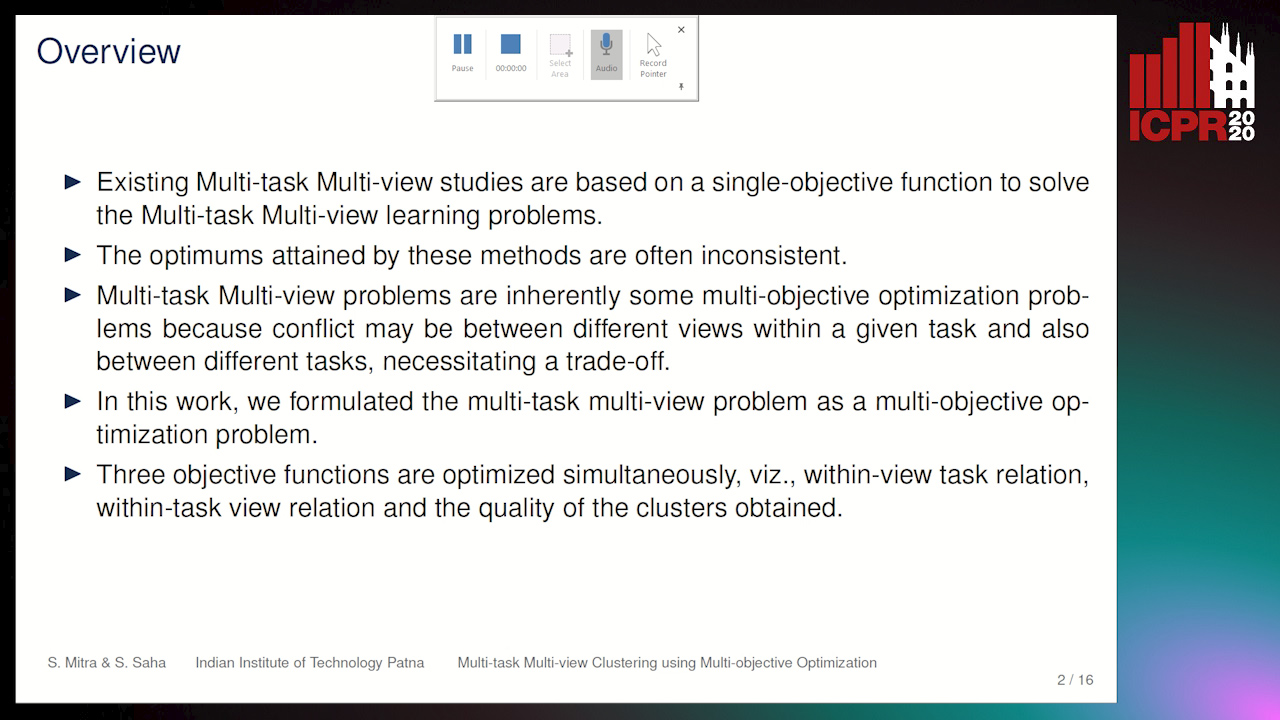
Auto-TLDR; MTMV-MO: Multi-task multi-view multi-objective optimization for multi-task clustering
Abstract Slides Poster Similar
Object Classification of Remote Sensing Images Based on Optimized Projection Supervised Discrete Hashing
Qianqian Zhang, Yazhou Liu, Quansen Sun

Auto-TLDR; Optimized Projection Supervised Discrete Hashing for Large-Scale Remote Sensing Image Object Classification
Abstract Slides Poster Similar
JECL: Joint Embedding and Cluster Learning for Image-Text Pairs
Sean Yang, Kuan-Hao Huang, Bill Howe

Auto-TLDR; JECL: Clustering Image-Caption Pairs with Parallel Encoders and Regularized Clusters
Learning Sign-Constrained Support Vector Machines
Kenya Tajima, Kouhei Tsuchida, Esmeraldo Ronnie Rey Zara, Naoya Ohta, Tsuyoshi Kato

Auto-TLDR; Constrained Sign Constraints for Learning Linear Support Vector Machine
Deep Topic Modeling by Multilayer Bootstrap Network and Lasso
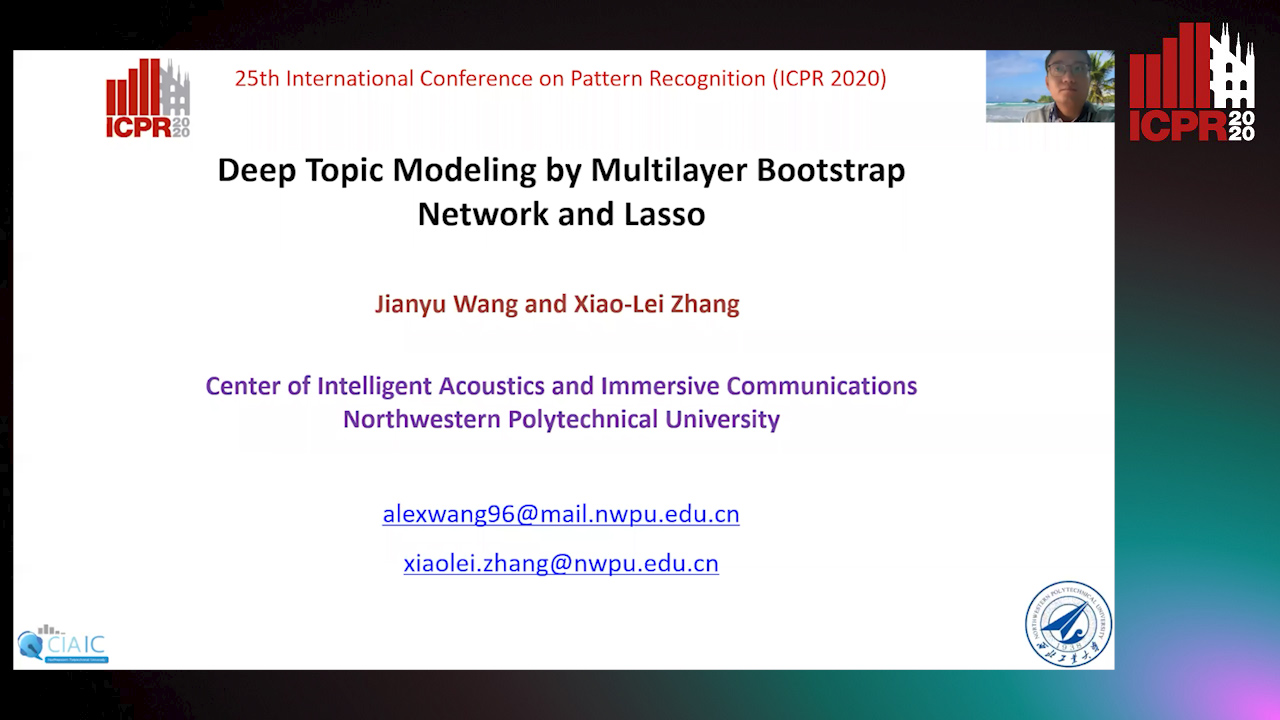
Auto-TLDR; Unsupervised Deep Topic Modeling with Multilayer Bootstrap Network and Lasso
Abstract Slides Poster Similar
Adaptive Context-Aware Discriminative Correlation Filters for Robust Visual Object Tracking
Tianyang Xu, Zhenhua Feng, Xiaojun Wu, Josef Kittler
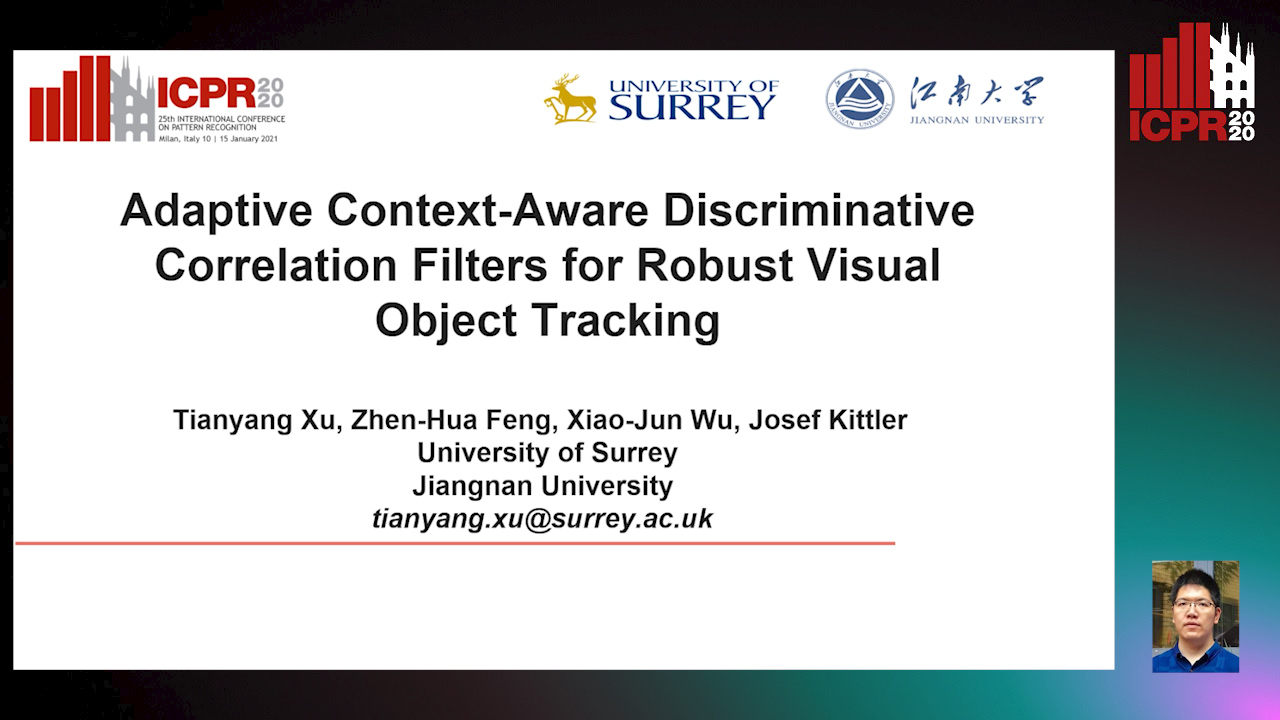
Auto-TLDR; ACA-DCF: Adaptive Context-Aware Discriminative Correlation Filter with complementary attention mechanisms
Abstract Slides Poster Similar
A Distinct Discriminant Canonical Correlation Analysis Network Based Deep Information Quality Representation for Image Classification
Lei Gao, Zheng Guo, Ling Guan Ling Guan

Auto-TLDR; DDCCANet: Deep Information Quality Representation for Image Classification
Abstract Slides Poster Similar
Snapshot Hyperspectral Imaging Based on Weighted High-Order Singular Value Regularization
Hua Huang, Cheng Niankai, Lizhi Wang

Auto-TLDR; High-Order Tensor Optimization for Hyperspectral Imaging
Abstract Slides Poster Similar
GraphBGS: Background Subtraction Via Recovery of Graph Signals
Jhony Heriberto Giraldo Zuluaga, Thierry Bouwmans

Auto-TLDR; Graph BackGround Subtraction using Graph Signals
Abstract Slides Poster Similar
Aggregating Dependent Gaussian Experts in Local Approximation

Auto-TLDR; A novel approach for aggregating the Gaussian experts by detecting strong violations of conditional independence
Abstract Slides Poster Similar
Fast Discrete Cross-Modal Hashing Based on Label Relaxation and Matrix Factorization
Donglin Zhang, Xiaojun Wu, Zhen Liu, Jun Yu, Josef Kittler
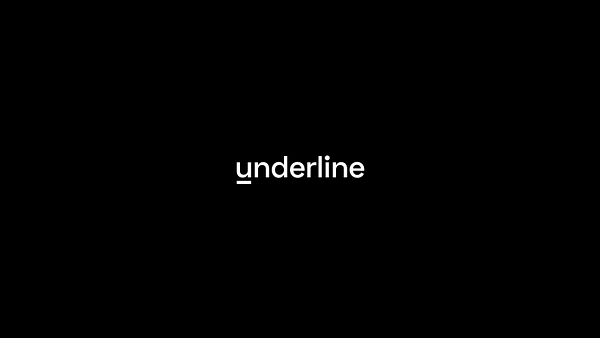
Auto-TLDR; LRMF: Label Relaxation and Discrete Matrix Factorization for Cross-Modal Retrieval
Learning Sparse Deep Neural Networks Using Efficient Structured Projections on Convex Constraints for Green AI
Michel Barlaud, Frederic Guyard

Auto-TLDR; Constrained Deep Neural Network with Constrained Splitting Projection
Abstract Slides Poster Similar
A Unified Framework for Distance-Aware Domain Adaptation
Fei Wang, Youdong Ding, Huan Liang, Yuzhen Gao, Wenqi Che

Auto-TLDR; distance-aware domain adaptation
Abstract Slides Poster Similar
Cross-spectrum Face Recognition Using Subspace Projection Hashing
Hanrui Wang, Xingbo Dong, Jin Zhe, Jean-Luc Dugelay, Massimo Tistarelli

Auto-TLDR; Subspace Projection Hashing for Cross-Spectrum Face Recognition
Abstract Slides Poster Similar
Watermelon: A Novel Feature Selection Method Based on Bayes Error Rate Estimation and a New Interpretation of Feature Relevance and Redundancy

Auto-TLDR; Feature Selection Using Bayes Error Rate Estimation for Dynamic Feature Selection
Abstract Slides Poster Similar
Low-Cost Lipschitz-Independent Adaptive Importance Sampling of Stochastic Gradients
Huikang Liu, Xiaolu Wang, Jiajin Li, Man-Cho Anthony So

Auto-TLDR; Adaptive Importance Sampling for Stochastic Gradient Descent
Deep Iterative Residual Convolutional Network for Single Image Super-Resolution
Rao Muhammad Umer, Gian Luca Foresti, Christian Micheloni

Auto-TLDR; ISRResCNet: Deep Iterative Super-Resolution Residual Convolutional Network for Single Image Super-resolution
Randomized Transferable Machine
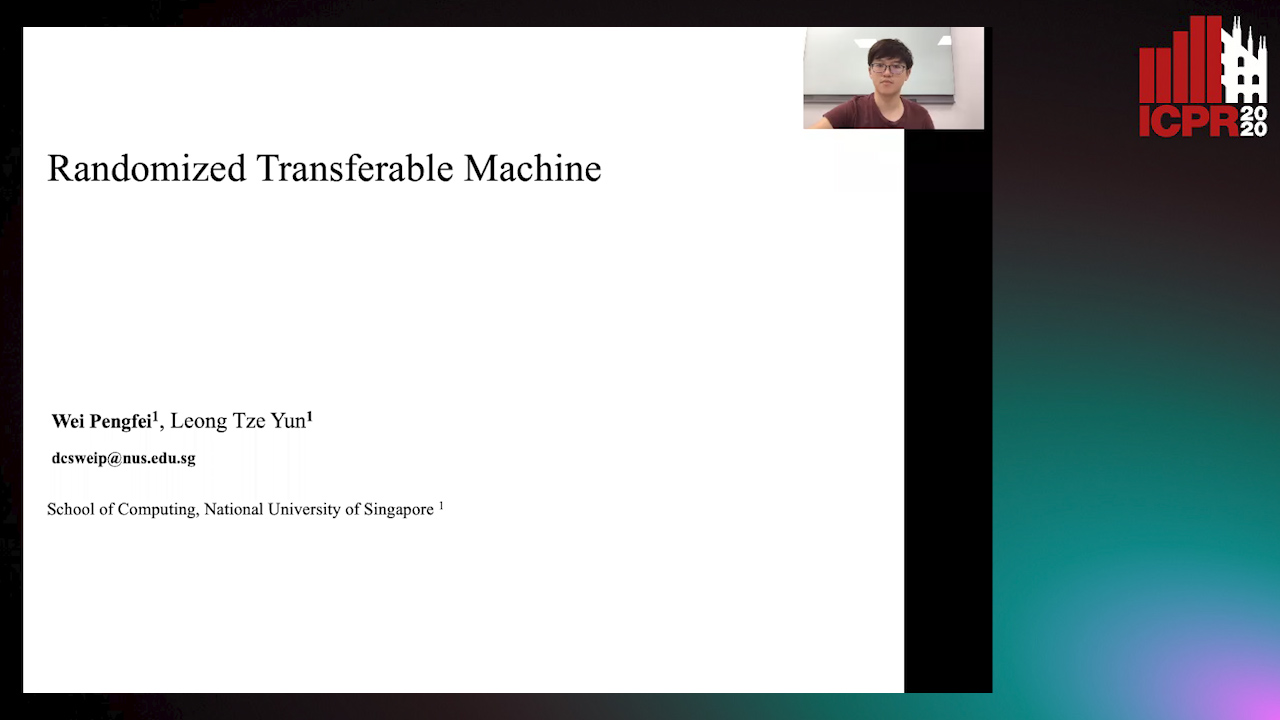
Auto-TLDR; Randomized Transferable Machine for Suboptimal Feature-based Transfer Learning
Abstract Slides Poster Similar
N2D: (Not Too) Deep Clustering Via Clustering the Local Manifold of an Autoencoded Embedding
Ryan Mcconville, Raul Santos-Rodriguez, Robert Piechocki, Ian Craddock

Auto-TLDR; Local Manifold Learning for Deep Clustering on Autoencoded Embeddings
Adaptive Matching of Kernel Means

Auto-TLDR; Adaptive Matching of Kernel Means for Knowledge Discovery and Feature Learning
Abstract Slides Poster Similar
Dependently Coupled Principal Component Analysis for Bivariate Inversion Problems
Navdeep Dahiya, Yifei Fan, Samuel Bignardi, Tony Yezzi, Romeil Sandhu
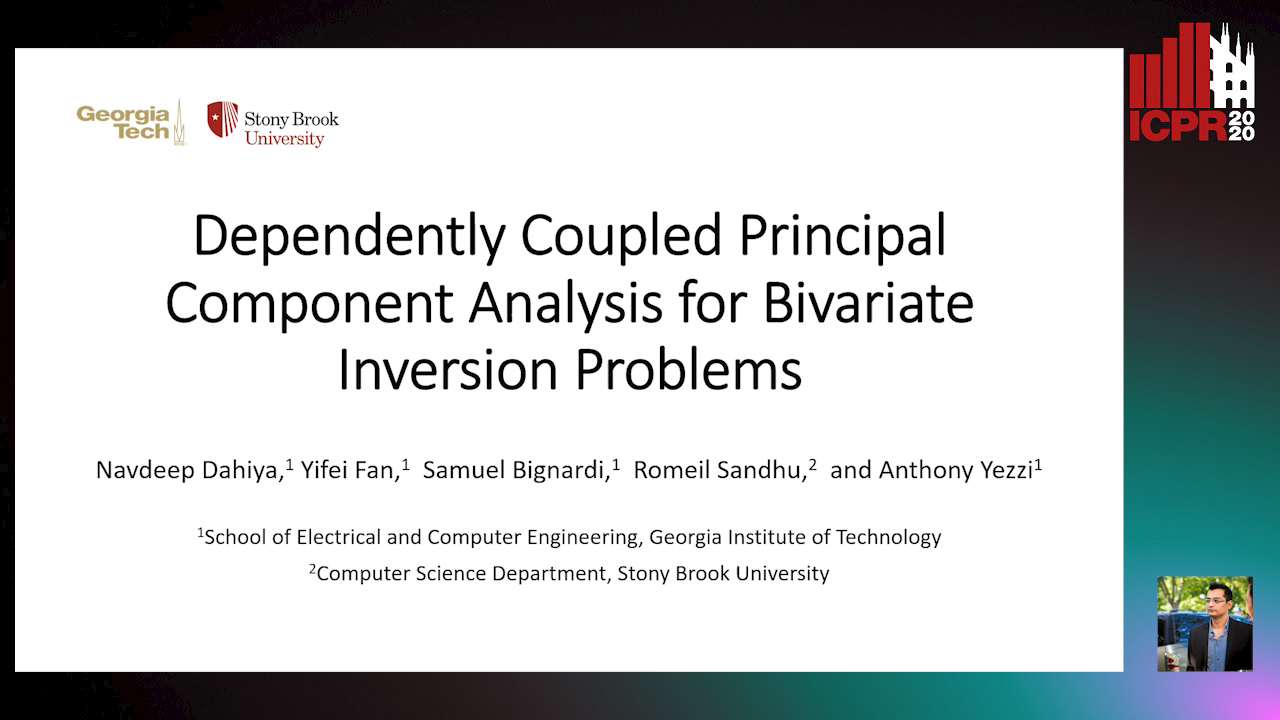
Auto-TLDR; Asymmetric Principal Component Analysis between Paired Data in an Asymmetric manner
Abstract Slides Poster Similar